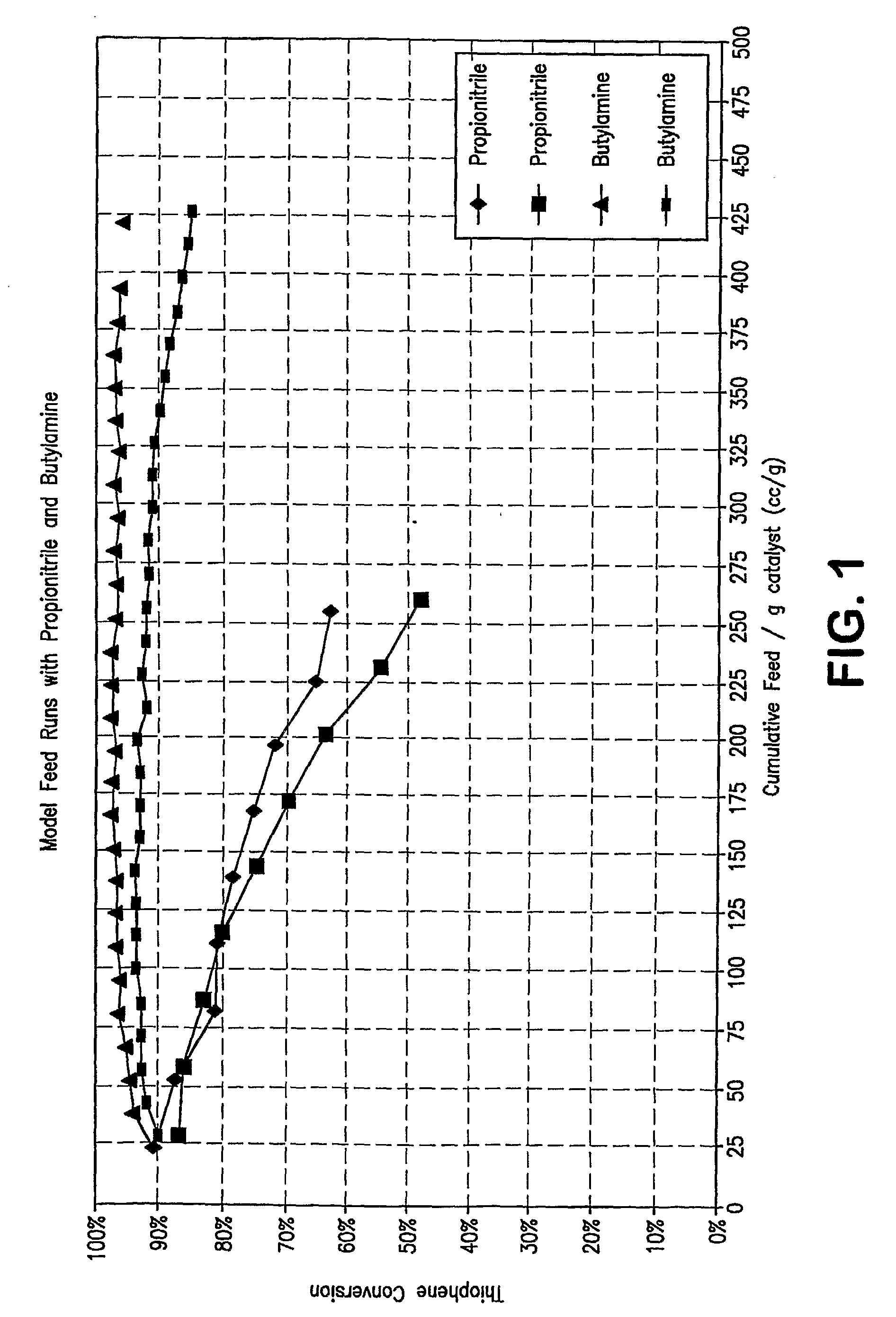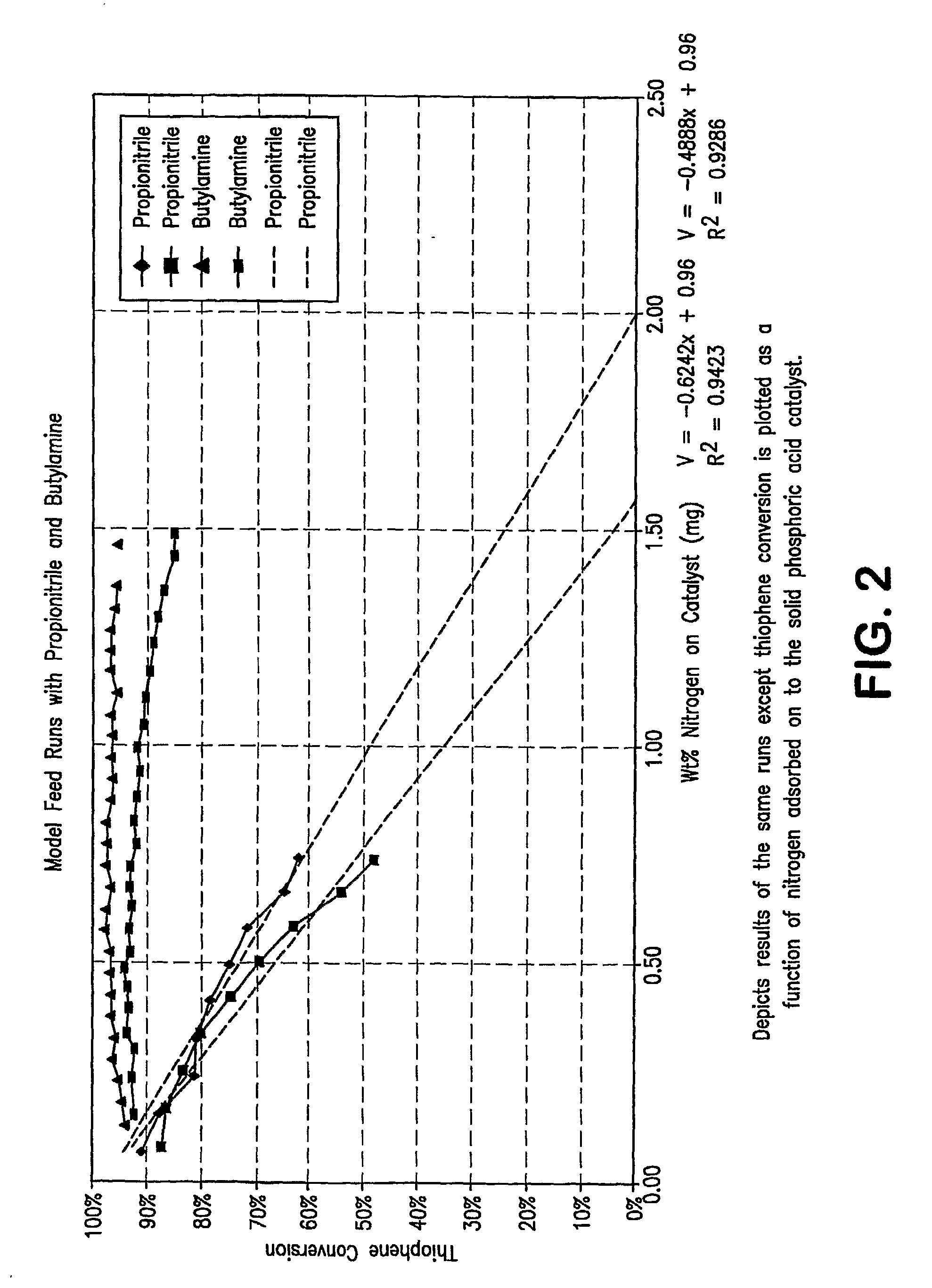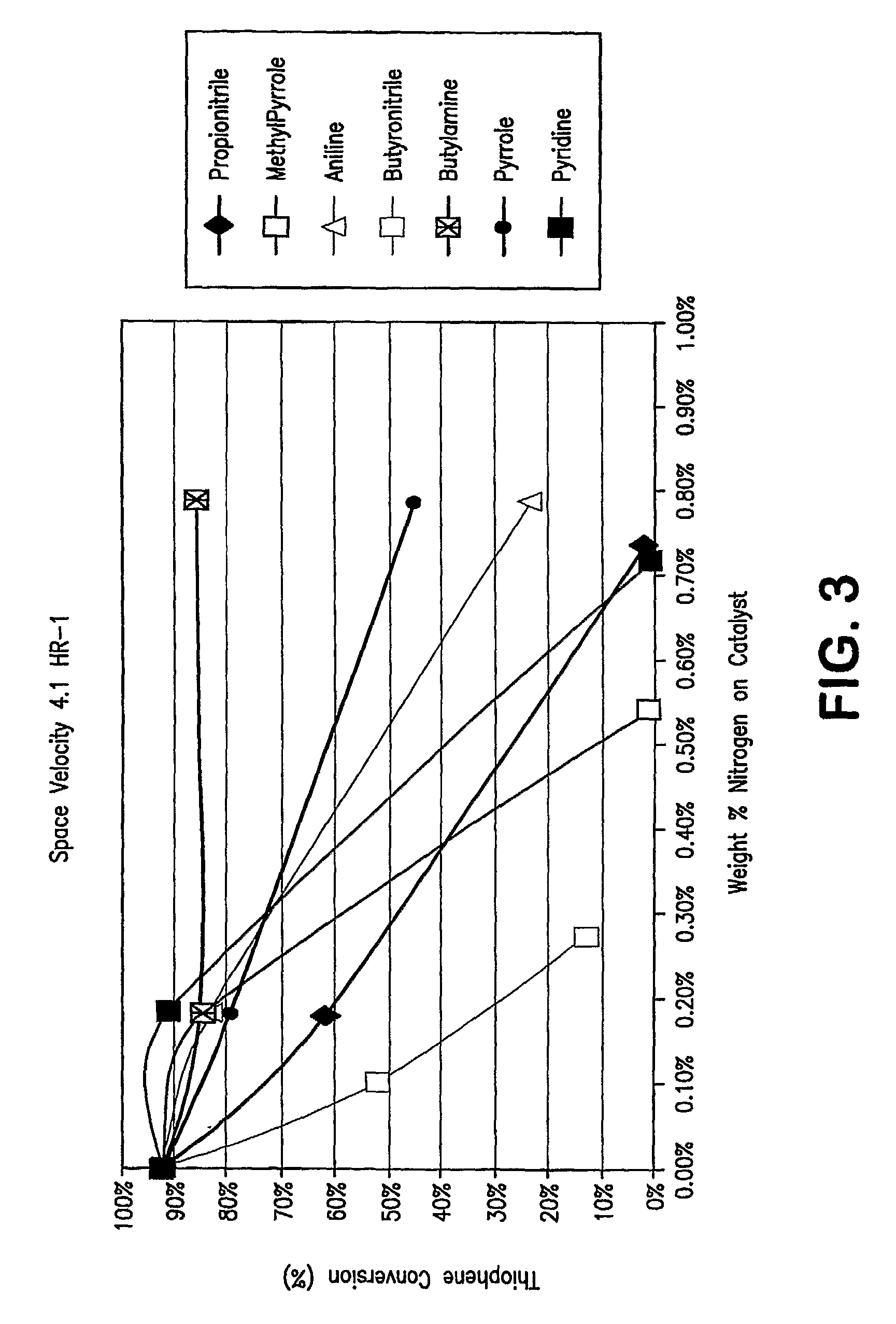Process For Removal Of Sulfur From Components For Blending Of Transportation Fuels
a technology of transportation fuel and component, applied in the field of transportation fuel, can solve the problems of objectionable air pollutants, containing organic compounds in fuels, and cost remains an important consideration, and achieves the effects of reducing the number of sulfur oxides, and improving the quality of the fuel
- Summary
- Abstract
- Description
- Claims
- Application Information
AI Technical Summary
Benefits of technology
Problems solved by technology
Method used
Image
Examples
example 2
[0096]FIG. 3 show a plot of the results of additional pilot plant runs using an acid catalyzed thiophene alkylation process. More specifically, the runs were carried out with model feeds which contained 80 ppmw of seven nitrogen compounds, both non-basic and basic nitrogen compounds. In FIG. 3, thiophene conversion is plotted on the Y axis in molar percentage of thiophene converted as a function of weight % nitrogen adsorbed on the catalyst. An inspection of the plot clearly shows that the more basic the nitrogen compound, the flatter the curve; i.e. the less the catalyst deactivation. The presence of non-basic nitrogen compounds in the feed results in a marked decrease of thiophene conversion activity versus feeds having only basic nitrogen compounds present.
[0097]Preliminary experimentation was conducted to determine a space velocity that would yield a thiophene conversion of ˜95% using the based feed (50% 1-hexene, 50% n-heptane, 200 ppm S as thiophene) which would allow the expe...
example 3
[0116]Table 4 sets out the feed inspections for a commercial acid catalyzed thiophene alkylation process feedstock that contains all of the indigenous non-basic nitrogen compounds and for the feed treated to remove nitrogen, first by acid washing and second by resin treatment. This commercial feed is a light cut range fluidized catalytic cracking (FCC) gasoline cut. This feed, typical of the type of feed processed by an acid catalyzed thiophene alkylation process unit, can be seen to contain a wide variety of nitrogen compounds. These nitrogen compounds can be separated into 3 general classifications: (1) basic nitrogen species including butylamine, hexamine, and pyridine; (2) neutral compounds including acetonitrile, propionitrile, and butyronitrile; and (3) somewhat acidic nitrogen compounds including pyrroles. The acid wash principally removed the basic nitrogen compounds, leaving behind the majority of the non-basic nitrogen compounds. In particular, the butyronitrile has limite...
example 4
[0121]Table 5 below shows the results of two titrations carried with two bases: pyridine and 2,6-di-tert-butyl pyridine on a commercially available solid phosphoric acid catalyst obtained from Süd-Chemie Inc. These titrations were carried out as follows:
[0122]The catalyst samples were crushed and sieved. Agglomerates with 180-355 mm diameters were loaded into a fixed bed pilot plant reactor. The samples (50 mg) were treated in flowing He (1.33 cm3 s−1) at 453 K for 1 h before taking titration measurements. Liquid mixtures of n-hexane (Fluka, 99.5%, 4.5 ml) with pyridine (Fischer, 99.9%, 20 ml) or 2,6-di-tert-butyl-pyridine (Aldrich, 97%, 50 ml) were prepared. The resulting mixture were introduced into a He stream (1.33 cm3 s−1) at a liquid volumetric flow rate of 0.09 cm3 h−1 resulting in mixtures with 0.3 kPa n-hexane and 5.3 Pa pyridine or 4.7 Pa 2,6-di-tert-butyl-pyridine. The temperature of the catalyst bed was 453° K. The amount of titrant adsorbed on the catalyst was calculate...
PUM
| Property | Measurement | Unit |
|---|---|---|
| temperatures | aaaaa | aaaaa |
| temperatures | aaaaa | aaaaa |
| boiling point | aaaaa | aaaaa |
Abstract
Description
Claims
Application Information
 Login to View More
Login to View More - R&D
- Intellectual Property
- Life Sciences
- Materials
- Tech Scout
- Unparalleled Data Quality
- Higher Quality Content
- 60% Fewer Hallucinations
Browse by: Latest US Patents, China's latest patents, Technical Efficacy Thesaurus, Application Domain, Technology Topic, Popular Technical Reports.
© 2025 PatSnap. All rights reserved.Legal|Privacy policy|Modern Slavery Act Transparency Statement|Sitemap|About US| Contact US: help@patsnap.com



